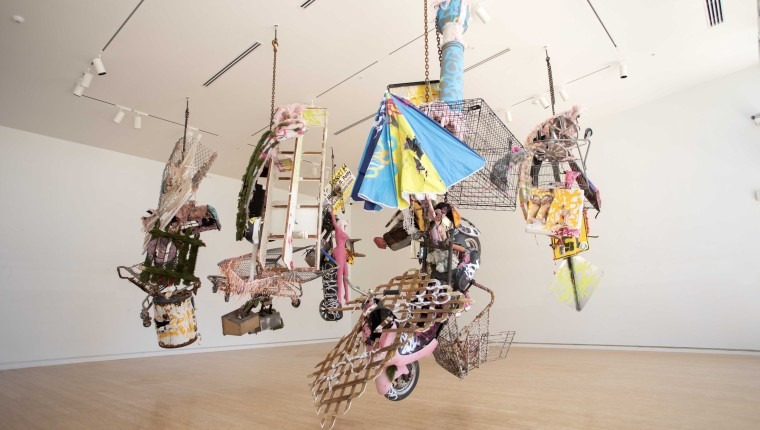Jolene Lower is a Fine Arts Major at St. Pete’s Eckerd College who’ll be graduating with a Bachelor of Arts Degree in just a few weeks. A Brooklyn native, Lower studied figure painting as a child, dabbled in graffiti and street art during adolescence – and now creates immersive, gallery-sized installations.
These influences come together in an avant-garde style that removes the distinction between art objects and non-art objects, and feels a lot like the psychedelic ending of the movie 2001: A Space Odyssey.
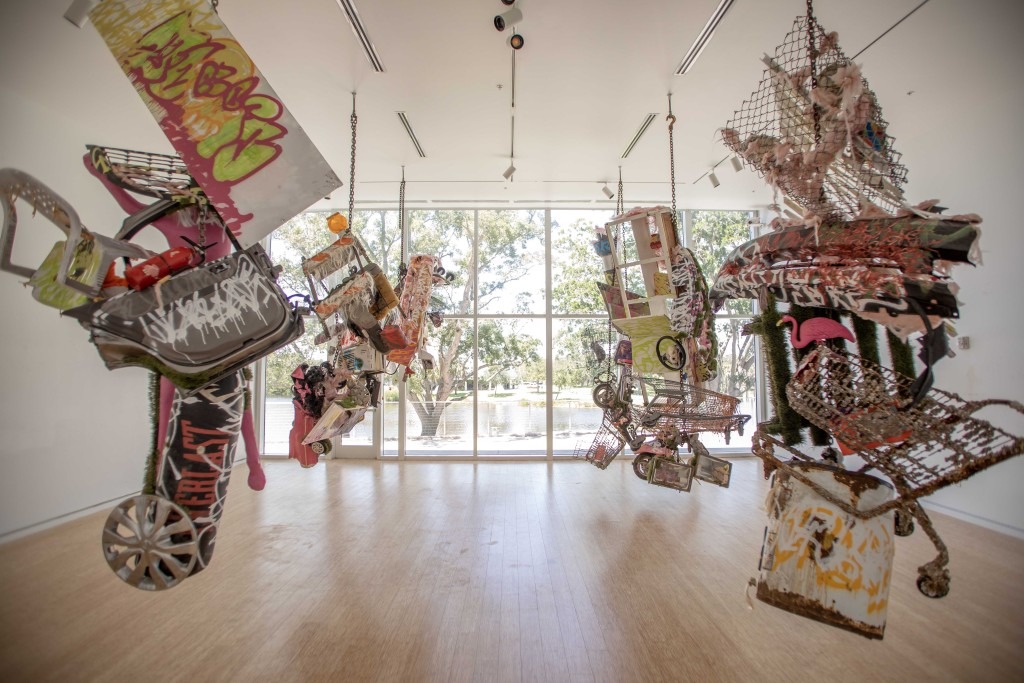
Lower’s thesis exhibition titled, Space Funk, was on view last month in the Main Gallery of the Nielsen Center for Visual Arts at Eckerd College. The installation consists of six clusters of cultural detritus suspended from the ceiling. Themes of space junk, transcendence, and the creation of value are conveyed by the brightly colored pinks and yellows mixed with barnacles and graffiti.
In context with the exhibition’s extraterrestrial themes, the artworks utilize the gallery space as the rocket propelling them into orbit.

Were you an artist growing up?
My mom is super cool. She let me draw on the walls, but then I drew on the door once, and she got mad.
When I got older, I vandalized a lot of things all the time. Vandalizing was fun to do with my friends. I started because I wanted to put my name on stuff – but then I actually started using spray paint more because there used to be a bunch of abandoned buildings in Brooklyn. I could spend time actually developing an aesthetic, using bigger walls, and using multiple colors because I could let it dry.
I think that time was super important because, in those buildings, my friends and I would create a new world. In hindsight, that was a kind of art installation. It was just our way of transforming the space.
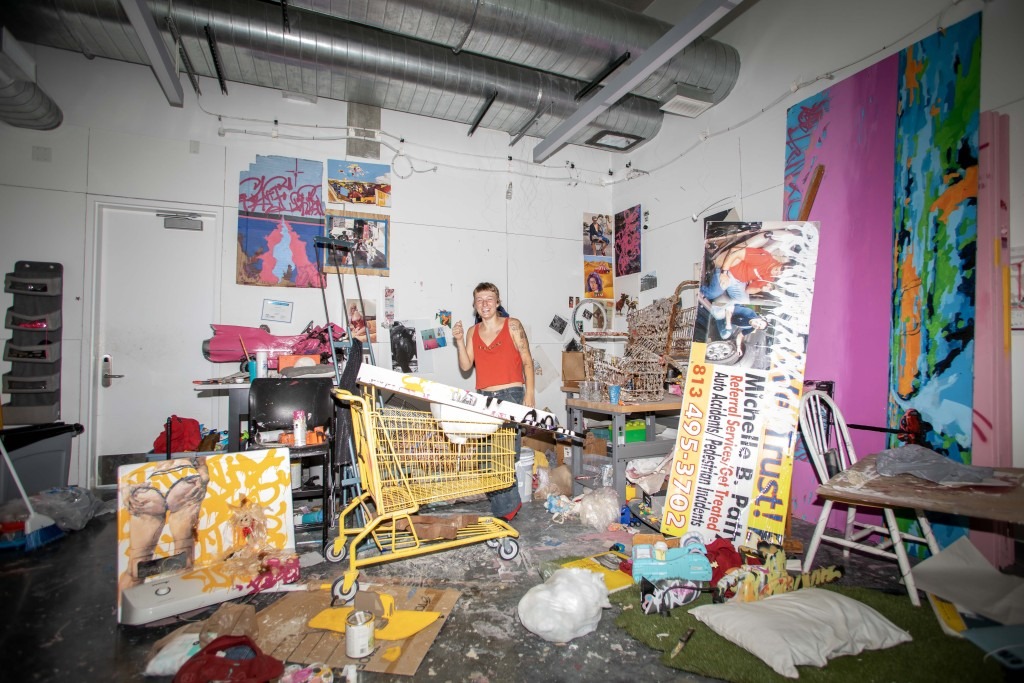
At 16, I took classes at the Art Students League, where I learned how to paint, specifically figure paint. I was the youngest person there and everyone else was, like, 80. It was an art class where I was the worst one — I liked that because it made me nervous, and scared.
At Eckerd, I had a class about installation art with the sculptor, Jason Hackenworth, and that’s when I first officially learned of the art form — and it was in your class that we read that essay on heteronormativity by Michael Warner and learned about [The Golden Record] they sent into space a long time ago, with the Voyager spacecraft, and that was really stressing me out.
That they sent a gold record that had an illustration of a naked Caucasian man and woman on it?
That doesn’t represent me, and when the aliens come, I don’t want them to group me in with the people depicted on that disc.
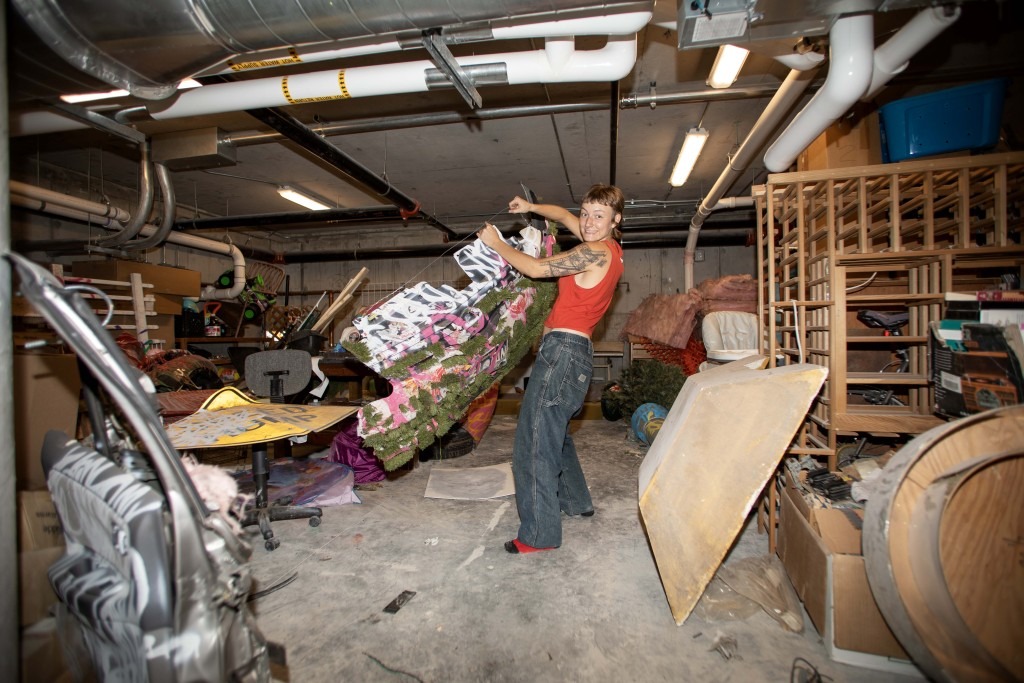
Your work, which has a Rauschenbergian-aesthetic look to it, seems to serve as a method of distinguishing yourself as an artist that doesn’t cater to mainstream sensibilities. It seems to say, “I’m not part of your group.” Does your work make a comment on commercialism?
If I were to be making money – or if making art were making me money – I don’t think I would like it as much. Because, in the real world, you need to make everything precise, and make everything the right way. But when it’s for myself, I just do it until I feel it’s right.
Which artists inspire you and your work?
For this thesis, I’ve been looking at art that’s actually in space. I wanted to find something that would chill me out after I heard about that gold disc on Voyager, and there’s actually a lot of really cool artwork up there.
I’m especially interested in the things that are up there that aren’t put there by NASA or some government, but instead by regular people.
There’s a flower artist named Makoto Azuma who tied a bouquet of flowers to a weather balloon, and when it reached the point where the air pressure was zero, it popped – and so he took pictures as the flowers were falling. The petals froze, and were floating away, and it looks really beautiful. He also did one with flowers at the bottom of the sea.
This exhibition was originally about space junk, but then I thought, ‘What is junk? That’s a social construction.’
The idea behind the exhibition is that the value of this work lies in the fact that I brought it to space. Like a billionaire, I put it on a rocket, it went up there, and now it’s back. It was garbage before I brought it to space and made it expensive.
Another influence for this exhibition is the story of former astronaut, David Wolf, who claimed he was never the same after he returned from space. He was up there for like [168] days, and, after he came back, he said it ruined his entire life. It was because he’d been to space and he didn’t feel like a normal person anymore.
To you, the separation between the Earth and space seems to be an allegory for heaven and purgatory. Would you agree?
In a way, when you transcend into space, you’re going where God’s supposed to be. It’s like you’re God, and no one can talk to you anymore.
I’d like my work to ask where God is. I imagine that, when you’re far into deep space, in darkness, silence, zero gravity, you’d be thinking a lot about God. And there’s no going back.
I see it more as the difference between knowing, seeing – and not knowing, ignorance. I’m never going to touch or see anything that’s even going to go into space, which makes it an insane power, of knowing what that’s like to have that perspective when no one else does. That’s a Godly power.
I use these items in my work because I see items from Florida as things that would never go into space. They’re not made out of mylar, they don’t look futuristic that you’re supposed to make space stuff look. I think of this exhibition as my Florida mooring field.
It seems that you’re using this idea of space, in a Duchampian way, as a scale of value. You’re making a distinction between what’s valuable by whether it deserves to go to space or not.
Because, to me, it’s all valuable. But, to other people, it’s useless until I make it worth something in some way.
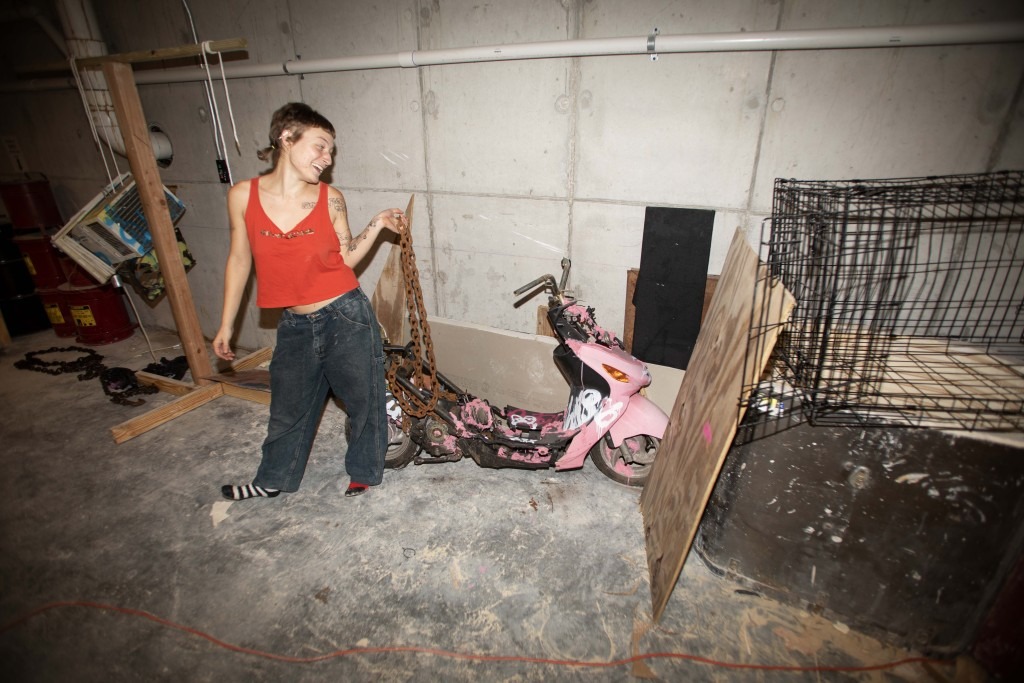
In graffiti, there’s always a tension between legibility and aesthetics. I can’t read any of the graffiti-esque paint markings in your work – they’re very drippy, but it does look like they say things.
Yeah, and sometimes, when it’s too big, you can read it, and I’m like, “TMI!”
So, you’re hiding personal messages in your work by disguising them as graffiti?
Yeah, mostly just because the layers in the image don’t correspond, there’s no relation between what it says and a ‘picture’ – so I don’t want the viewer to think that what they should do is read the text and interpret the piece in that way.
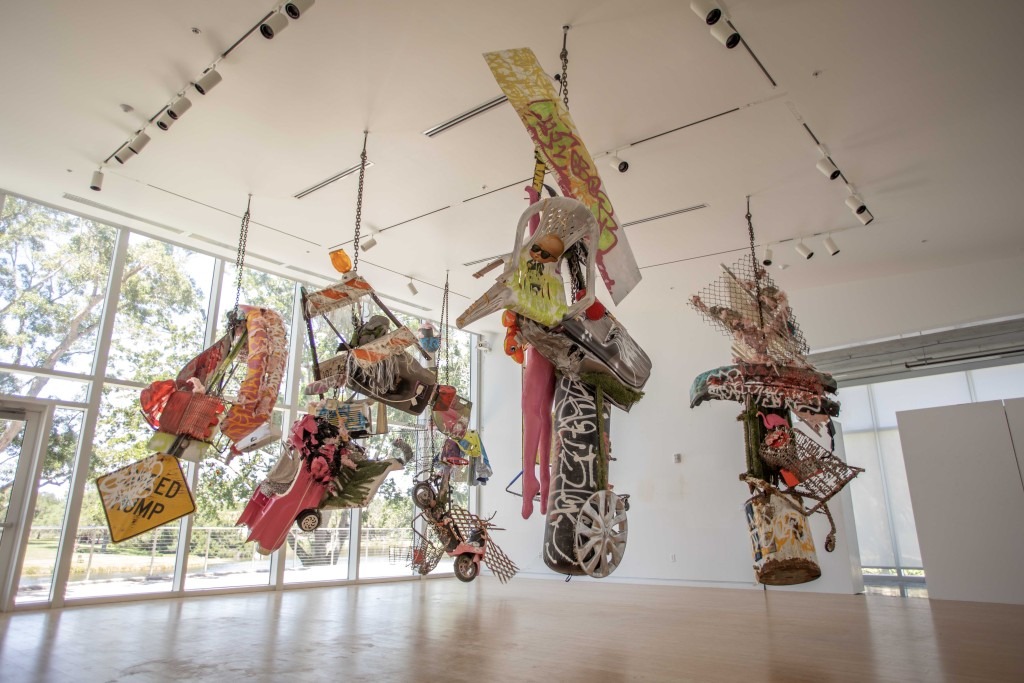
To me, the pieces in this exhibition that include both graffiti elements and Renaissance-style, painterly renderings are like clashes between disparate eras of art history. You’re using readymades, but you’re also transforming them in ways that show your hand.
I see how they’re readymades, found objects – but what other object could I possibly get if I don’t find them? What could I possibly make that’s not a found object? Yes, maybe I could transform it more, but I can’t do it better than it already is!
I feel like graffiti, in my work, is more trying to make it not look good. For example, some of pieces in this exhibition have graffiti elements to purposefully make the underlying image look bad. Like, “Fuck this, and your property value! Let me make it as gross as possible!”
It’s very different here in Florida than it is in Brooklyn. In Florida, it looks like no one’s ever been here, like no one’s left their mark. There’s not even any garbage anywhere.

A lot of St. Pete looks like your work.
Right. [My work is] pretty and colorful, and has rainbows, but in a super alienating way.
